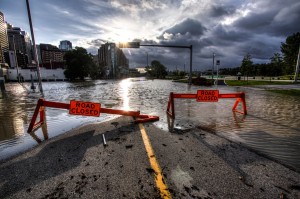It’s Emergency Preparedness Week in Canada, and this year Calgary is marking three years since the devastating flood hit our city. Because there will always be a risk of another flood, and we are in “flood season”, here’s some tips to prepare:
Know the risks: first thing to do is find out if you’re living in an area where flooding could potentially happen. If you live somewhere that’s already been flooded, are you living in a floodway or flood-fringe zone?
Make a plan: make a plan with your entire family so that everyone knows exactly what to do when a flood happens. Include accommodation, communication and supply plans as well.
Make an emergency kit: include food, water for a few days, battery powered electronics (radio, flashlight), first aid/medications, clothing, etc.
Floods are one of the most common and costly disasters in Canada. Floods occur when there is heavy or steady rain for several hours or days, which oversaturates the ground. All rivers in Canada experience flooding at one time or another. Hurricanes, violent storms, ice jams or dams breaking can also lead to flash flooding. The potential for flood damage is high where there is development on low-lying, flood-prone lands. [Red Cross]
If you are at home when there’s flooding:
- Turn off power and gas lines
- Place your valuables on the upper floor of your house
- Remain on the upper floor and wait for instructions from your local authorities
If you are away from home during flooding:
- Stay away from swollen streams and rivers, since moving waters can sweep you away, even if you are in a car
- Head to elevated areas
- Remain in an area where you are visible and safe
And always pay attention to local media and emergency alerts about potential flooding in your area. The Red Cross has some great tips for flood preparedness, as well as the City of Calgary.
**Most of these tips apply to any natural disaster, so have an emergency kit at home at all times. If you’d like to donate to the Red Cross in helping the Fort McMurray fires, click here.




